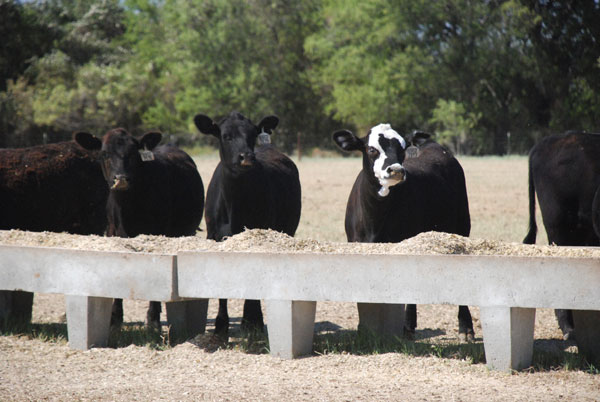Drought Supplementation: Think Outside The Box
During a drought, supplementing your cows correctly becomes even more important.
September 30, 2011

Traditionally, when cowherd supplementation is discussed, we focus on meeting the protein needs of the cow, with a goal of maximizing forage intake by supplementing protein, the most limiting nutrient in the available forages. However, this year, the drought has severely limited the supply of both grazed and harvested forages in many regions.
In this scenario, both energy and protein are limiting cow performance. Therefore, supplements should be evaluated on both energy and protein contributions to the nutrition program. When evaluating potential feedstuffs as supplements, producers should consider both the cost per unit of energy (TDN, net energy maintenance or metabolizable energy) and crude protein.
The major concern regarding energy supplementation in a non-drought situation, when forage supply is adequate, is the “substitution effect.” Essentially, this is when the energy supplement (starch or grain-based) reduces grazed forage intake, which compromises overall energy balance.
Under non-drought conditions, fiber-based, as opposed to starch-based, energy sources are recommended. However, in a drought situation when forage supply is critically low, meeting the energy requirements of the cow using the most economical feedstuffs available (cost per unit of energy basis) is our first priority. The source of supplemental energy (fiber vs. starch) is of less importance at this time.
If a commercially blended supplement is used, consider the inclusion of an ionophore. The use of ionophores (Rumensin and Bovatec) has become a standard practice in growing cattle diets. Rumensin is the only product approved for use with mature beef cows and must be delivered in at least 1 lb. of feed/day. Research indicates cows fed 200 mg./day of Rumensin required 5-10% less feed to maintain the same weight and body condition as cows not receiving Rumensin.
During a drought situation, non-traditional grazing opportunities often are available. The high price of forages makes baling look attractive. However, in almost every situation, grazing presents a lower-cost alternative to haying. There are a number of different opportunities that may be available, including grazing re-growth in wheat stubble, failed corn, milo, soybeans, etc. Be aware, though, that some of these grazing options may carry risks, such as nitrates.
If pastures are rotated, another option some producers may want to consider is regrazing forage once it’s become dormant. The objective is to encourage cattle to graze underutilized areas of pastures that previously were not consumed efficiently. Consider placing mineral or supplements in these areas to encourage grazing behavior. Pastures must be evaluated frequently to assess the amount of available forage, and overgrazing should be avoided to minimize long-term negative effects on the pasture.
There is no easy way to manage through a drought. But, some of the key elements for success are carefully evaluating the short- and long-term outcomes associated with feeding decisions and not being afraid to think outside the box.
You May Also Like


.png?width=300&auto=webp&quality=80&disable=upscale)
